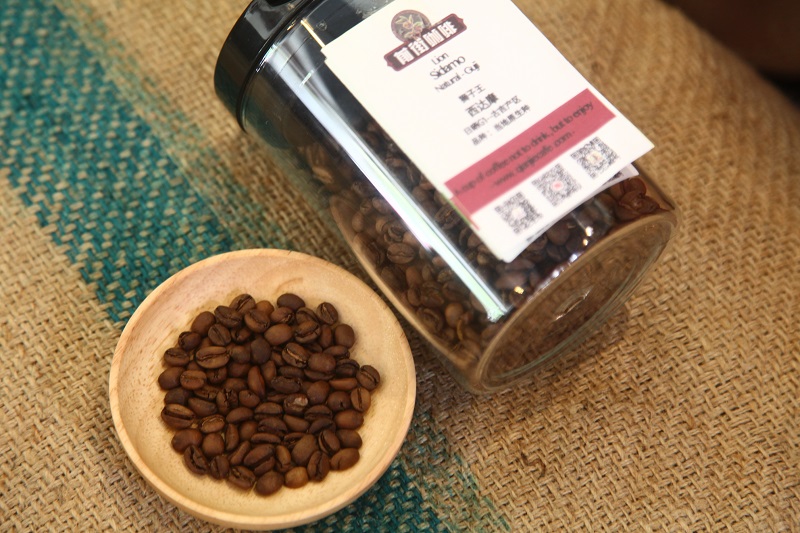Flavor and taste characteristics of Sidamo Sun Lion King Coffee beans introduction to Esseguji Coffee producing area
The Lion King insolates the Guji producing areas in Sidamo Province, Ethiopia.
The coffee flavor of Sidamo is very diverse, because of the different soil composition, regional microclimate and countless native coffee varieties, the coffee produced in each urban area has obvious differences and characteristics. Sidamo producing area (Sidama) is located in the south of Ethiopia. The industry here is dominated by agriculture, and the coffee-growing area is located around the East African Great Rift Valley (Great Rift Valley). The coffee flavor of Sidamo is very diverse, because of the different soil composition, regional microclimate and countless native coffee varieties, the coffee produced in each urban area has obvious differences and characteristics. Sidamo producing area (Sidama) is located in the south of Ethiopia. The industry here is dominated by agriculture, and the coffee-growing area is located around the East African Great Rift Valley (Great Rift Valley).
Guji is located in the southeast of the Gedeo area where Sidamo is produced, in the wilderness of 2100 meters above sea level, but it is higher than that of Yega, with the highest elevation of more than 2600 meters, much higher than the average Sidama, and a larger area. Guji coffee tends to have sweet blueberry aromas with lemon aromas, rich floral and fruit aromas, peach fruit honey and surprisingly bright acidity and full berry aromas.
1. After picking beans without special screening and treatment, uneven appearance and maturity are mixed together, the process is relatively rough, so the quality of coffee beans is unstable and prone to defective beans.
two。 Coffee farmers usually find an open space near their home to deal with it, so there are often a lot of impurities or dirt on the ground, and coffee is easy to get smelly.
The improved method of tanning, that is, to improve the two shortcomings of the traditional way:
1. When picking beans, only fully ripe crimson coffee cherries are picked. Before exposure, the beans will be screened for defects in the processing plant to make the beans look more average in size and maturity.
two。 Next, use tall wooden frames or whole scaffolding for the sun to avoid the risk of beans smelling on the ground. In the process of exposure, take good care of the beans so that the coffee beans can be evenly exposed to water; every three to five days, coffee workers will manually screen out defective and moldy beans. Therefore, by the end of the exposure, before the beans enter the market to remove the peel and flesh, a bright crimson coffee cherry is already a grade with few defects. The coffee beans after harvest must enter the treatment program immediately, otherwise they will begin to ferment, making the coffee beans have a bad smell. There are two methods of treatment: "solarization" and "washing", which will cause different flavors. Sun-dried beans have a complete natural mellow flavor, gentle aroma and more gum; washing rules have a good mellow taste, high aroma and lively sour taste.
[sun Sidamo]: the bean body is smaller than Longberry, and it is yellowish in green. in the sun drying field of Sidamo, the coffee is placed in a hemp net wooden rack, and the workers take turns to stir the coffee manually in the sun. Sidamo is usually marked with G4 exit, while water-washed Sidamo is mostly exported at G2 level because of the better sun treatment process.
[washed Sidamo]: coffee raw bean green is slightly gray, some places are thick and some places are small, the acidity is soft and strong, mellow, sweet and spicy, it is one of the courtyard coffee in the highlands of southern Ethiopia. Unlike ordinary African coffee, Sidamo has clear acidity, smooth taste and delicate floral smell.
Sun, Sidamo, the Lion King! 15 grams of beans, steamed in 90 °water for 30 seconds, powder / water ratio at 1:15

Important Notice :
前街咖啡 FrontStreet Coffee has moved to new addredd:
FrontStreet Coffee Address: 315,Donghua East Road,GuangZhou
Tel:020 38364473
- Prev

The Best Coffee in Vietnam: an introduction to the planting varieties and Cultural History of Central Plains Coffee in Bangmei and Shu
For the exchange of professional baristas, please follow the coffee workshop (Wechat official account cafe_style) located in the Central Plains Coffee headquarters in Bang Mei Shu, where you can enjoy the variety, history and culture of coffee. As early as the French colonial period, Vietnam began to grow a large number of coffee, but also cultivated Vietnam's unique coffee culture, coffee as water, it has long been common, but in fact, Vietnam's coffee industry is in recent decades.
- Next

Knowledge of Ethiopian producing areas, Lion King sun introduction of Guji producing areas in Sidamo, Ethiopia
Ethiopian name: Ethiopia location: East African Capital: Adis Abba Addis Ababa Religion: Christian main language: Amharic time Zone: GMT+3 Metrology: metric (Metric) currency: bill Birr (1 $20 birr) Agricultural products (export): coffee, flowers, sesame are the main cash crops export port: Djibouti, now
Related
- Detailed explanation of Jadeite planting Land in Panamanian Jadeite Manor introduction to the grading system of Jadeite competitive bidding, Red bid, Green bid and Rose Summer
- Story of Coffee planting in Brenka region of Costa Rica Stonehenge Manor anaerobic heavy honey treatment of flavor mouth
- What's on the barrel of Blue Mountain Coffee beans?
- Can American coffee also pull flowers? How to use hot American style to pull out a good-looking pattern?
- Can you make a cold extract with coffee beans? What is the right proportion for cold-extracted coffee formula?
- Indonesian PWN Gold Mandrine Coffee Origin Features Flavor How to Chong? Mandolin coffee is American.
- A brief introduction to the flavor characteristics of Brazilian yellow bourbon coffee beans
- What is the effect of different water quality on the flavor of cold-extracted coffee? What kind of water is best for brewing coffee?
- Why do you think of Rose Summer whenever you mention Panamanian coffee?
- Introduction to the characteristics of authentic blue mountain coffee bean producing areas? What is the CIB Coffee Authority in Jamaica?

